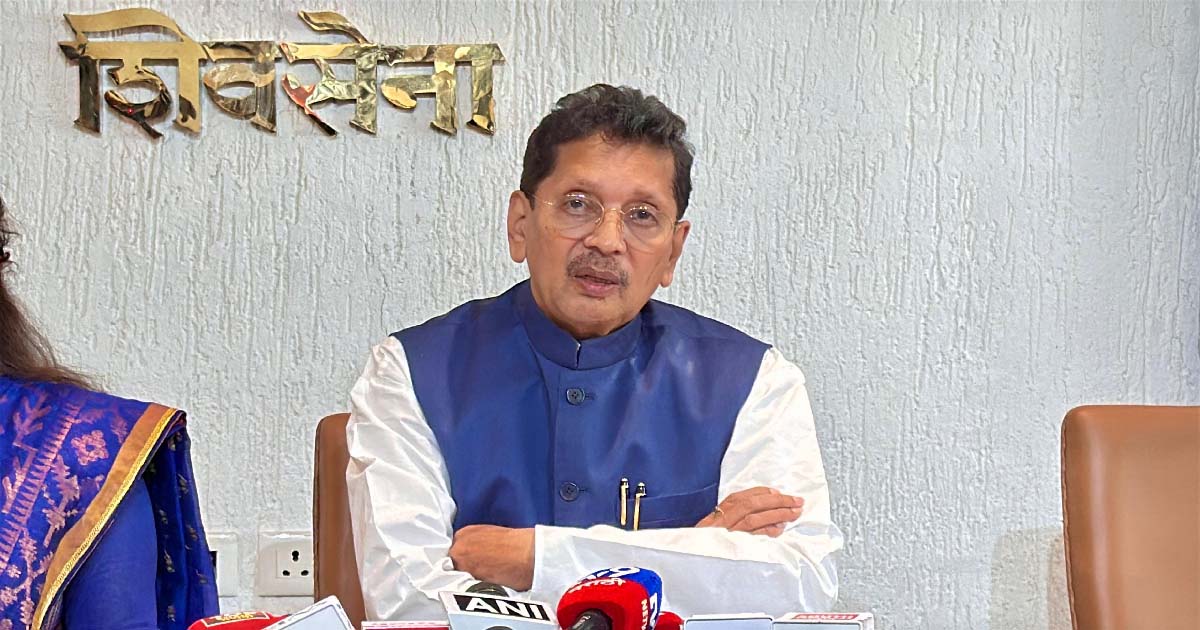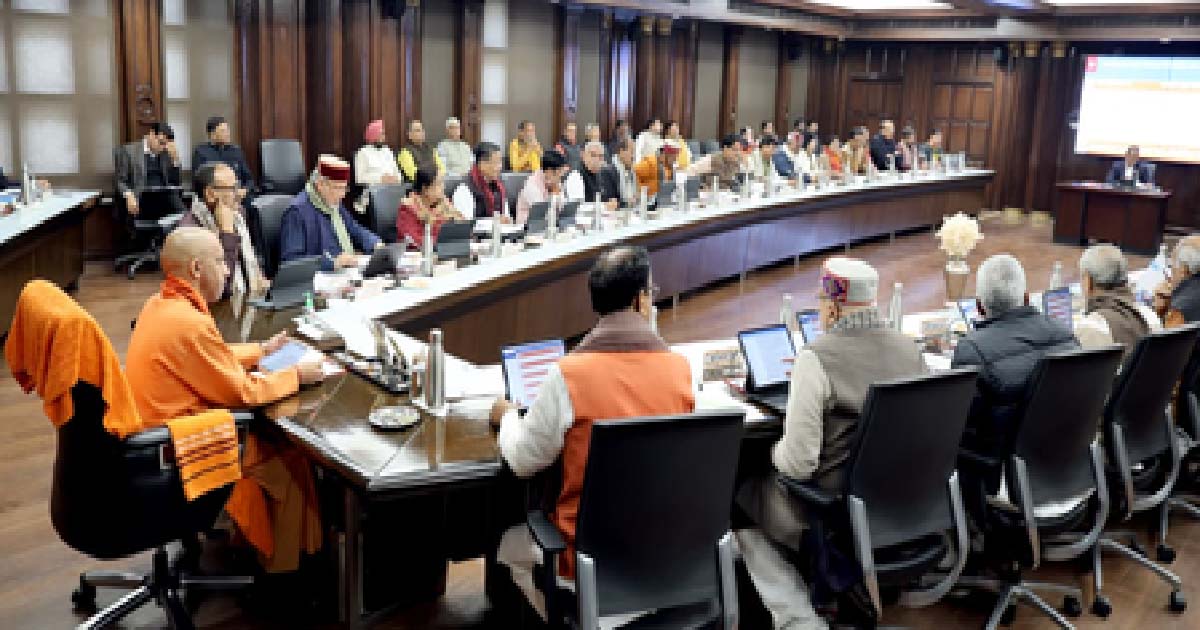National News
After Ghulam Nabi Azad’s resignation, Manish Tewari slams Congress ‘coterie culture’
A day after Ghulam Nabi Azad quit the Congress blaming party leader Rahul Gandhi, another G-23 leader Manish Tewari on Saturday slammed the grand-old party for its “coterie culture”.
Talking to IANS over phone, the Anandpur Sahib MP said had the party implemented the suggestions of the G-23 group in December 2020, the current situation would not have arisen.
However, hitting out the at the ‘coterie culture’ he said: “Peons of Congress leaders are giving sermons to those who have given decades to party.” These “so-called” leaders are not capable of winning even the municipal polls.
Asserting that he is not a tenant but a shareholder in the party, the veteran leader said the very fact that Congress is losing all elections confirms that the party is not in sync with the people of the country.
Ghulam Nabi Azad, in his resignation letter, has blamed Rahul Gandhi for the destruction of the party and alleged that proxies are propped up for the president’s post, who will only be a mere puppet.
Azad alleged that the G-23 leaders were abused, humiliated, insulted and vilified in a specially summoned meeting of the extended Congress Working Committee following their letter seeking reforms in the party in 2020.
“Unfortunately, the situation in the Congress party has reached such a point of no return that now “proxies are being propped up to take over the leadership of the party. This experiment is doomed to fail because the party has been so comprehensively destroyed that the situation has become irretrievable. Moreover, the ‘chosen one’ would be nothing more than a puppet on a string,” his resignation letter read.
He said at the national level, the Congress has conceded the political space available to the BJP and state level space to regional parties.
“This all happened because the leadership in the past eight years has tried to foist a non-serious individual at the helm of the party,” he alleged without taking the name of Rahul Gandhi.
Azad alleged that in August 2020 when he and 22 other senior colleagues, including former Union Ministers and Chief Ministers wrote to Sonia Gandhi to flag the abysmal drift in the party, the “coterie” choose to “unleash its sycophants on us and got us attacked, vilified and humiliated in the most crude manner possible”.
Mumbai Press Exclusive News
If Uddhav Thackeray is elected unopposed then everything is fine, if someone else is elected then it is wrong: Deepak Kesarkar

Mumbai: During the municipal elections, the leaders of the Uddhav Thackeray group are constantly trying to spread chaos. Sometimes they are spreading wrong information and sometimes they are doing politics in the name of Chhatrapati Shivaji Maharaj. Former Shiv Sena minister and MLA Deepak Kesarkar expressed his strong displeasure and reacted strongly to this irresponsible statement of the UBT. In a press conference held in Mumbai, Deepak Kesarkar said that the UBT leaders are busy defaming Maharashtra. They do not have any development plan, hence they are constantly making misleading and unnecessary statements. Shiv Sena national spokesperson Shaina NC was also present at the press conference.
Deepak Kesarkar questioned the UBT leaders and said that if Uddhav Thackeray can be elected unopposed, why not other candidates? It is wrong to repeatedly question the election process. The Election Commission works with complete transparency and under this transparency, all the candidates were elected unopposed. UBT has no development agenda, while Mahayoti is moving forward with development issues, which is why people have faith in Mahayoti.
Reacting strongly to Sanjay Raut’s statements, Deepak Kesarkar said that Chhatrapati Shivaji Maharaj belongs not only to Maharashtra but to the entire country. The kind of politics Sanjay Raut is playing in the name of a great personality shows that his health is still not good. He should re-evaluate himself so that he can stop making such absurd statements.
He added that Chhatrapati Shivaji Maharaj was given the highest honour during the tenure of Prime Minister Narendra Modi. Shivaji Maharaj’s emblem was included in the Indian Navy’s emblem, a move that no government had done before.
Shiv Sena national spokesperson Shaina NC targeted UBT and said that in the last 25 years, Mumbai has been full of potholes. However, now Shiv Sena central leader and Deputy Chief Minister Eknath Shinde has pledged to make Mumbai pothole-free. The work has started, and by 2027, all the roads of Mumbai will be pothole-free.
He added that a detailed blueprint for Mumbai was prepared in an important meeting between Deputy Chief Minister Eknath Shinde and Transport Minister Pratap Sarnaik. Under this blueprint, several important decisions related to roads and transportation have been taken, which will provide significant relief to the people of Mumbai.
National News
Maharashtra Municipal Corporation Elections 2026: Chief Election Observer Reviews Poll Preparedness In

Palghar: With the election programme for the Vasai–Virar Municipal Corporation General Elections 2026 announced by the State Election Commission, preparations for the polling process were reviewed on Monday by the Chief Election Observer, Pradeep P.
Polling for the Vasai–Virar Municipal Corporation will be held on January 15, 2026. In this context, a review meeting was convened at the Municipal Corporation headquarters under the chairmanship of the Chief Election Observer to assess the readiness of the administration for the smooth conduct of elections.
The meeting was attended by Municipal Commissioner and Chief Election Officer Manojkumar Suryawanshi (IAS), Additional Commissioner (Elections) Sanjay Herwade, Additional Commissioner Deepak Sawant, all ward-wise Returning Officers, Chief Accounts and Finance Officer Indrajit Gore, Deputy Commissioner of Police Pournima Chaugule-Shringi, Deputy Commissioner of Police Suhas Bavche, Superintendent of Police (State Excise) Bargaje, City Engineer Pradeep Pachange, along with all Deputy Commissioners, Executive Engineers and department heads of the Municipal Corporation.
During the meeting, officials from the Police Department and State Excise Department presented details regarding security arrangements, inspection drives, enforcement of the Model Code of Conduct, and security measures for strong rooms. The Chief Election Observer directed the police administration to ensure comprehensive planning and effective measures to maintain law and order throughout the election period.
The Observer was also briefed on the procedures followed during the scrutiny and acceptance of nomination papers. Ward-wise Returning Officers presented information on polling arrangements, including the number and facilities of polling stations, deployment and training of polling staff, vehicle arrangements, security planning, availability and distribution of EVMs, and the establishment and security of strong rooms.
Further, the Municipal Corporation shared details on staff deployment, distribution of election materials, voter awareness initiatives, implementation of the Model Code of Conduct, and medical facilities to be provided at polling centres. The Chief Election Observer issued necessary instructions to ensure that the polling process is conducted in a smooth, transparent and orderly manner.
Expressing satisfaction over the preparations and measures undertaken so far, the Chief Election Observer appreciated the coordinated efforts of the Municipal Corporation and the police administration in ensuring free and fair elections.
National News
Rural jobs: UP CM Adityanath criticises Congress for opposing VB-G RAM G Act

Lucknow, Jan 6: Uttar Pradesh Chief Minister Yogi Adityanath said on Tuesday that the Viksit Bharat – Guarantee for Rozgar and Ajeevika Mission – Gramin (VB-G RAM G) Act is going to prove to be a milestone for achieving Viksit Bharat 2047 and hit out at the Congress and its allies for criticising the new rural job law.
Addressing mediapersons, the Chief Minister said the VB-G RAM G law will boost rural infrastructure and development in states, as a precursor to building a developed Bharat.
“The empowerment of the rural economy and farmers and workers is needed to achieve the vision of Viksit Bharat 2025,” said CM Adityanath, congratulating Prime Minister Narendra Modi for the revolutionary law.
Chief Minister Adityanath said, “The Congress and its allies are raising various questions regarding this important legislation. It is unexpected that, in the interest of the nation, workers, farmers, and rural development, this crucial step should receive full support and appreciation. The legislation reflects the government’s commitment, and people should acknowledge the Prime Minister and the NDA for this initiative…”
He said fake job cards, weak social audits and administrative shortcomings were plaguing the earlier rural job scheme.
The need for calling the media briefing arose as people who ruled the country for a long period, looted the resources and forced the poor to starve to death, are opposing the VB-G RAM G law as they fear that they would be “exposed” if they praise such a revolutionary reform, he said.
“The people will question them as to why they did not carry out the reform when they were in power,” he said, claiming that the opposition bloc is supporting its old “corruption-riddled” formula instead of thanking PM Modi for the revolutionary reform.
He said the Congress-era rural job scheme was a total “failure” as it could not create a sustainable mechanism for building durable assets.
“Therefore, under the new amendment, the employment guarantee has increased from 100 days to 125 days. Wages will now be paid every week; workers will no longer have to wait months or years. If a labourer works during the week, payment will be made weekly, and if there is any delay, compensation will also be provided,” he said.
Calling the new law a boon for the state, Chief Minister Adityanath said, “Uttar Pradesh has more than 57,600 gram panchayats, and if we talk about revenue villages, the state has over 1,05,000 revenue villages. Even today, nearly 60 to 70 per cent of Uttar Pradesh’s population lives in rural areas. Uttar Pradesh is also known as the food basket of India, and naturally, farmers and workers play a crucial role in sustaining the country.”
-

 Crime3 years ago
Crime3 years agoClass 10 student jumps to death in Jaipur
-

 Maharashtra1 year ago
Maharashtra1 year agoMumbai Local Train Update: Central Railway’s New Timetable Comes Into Effect; Check Full List Of Revised Timings & Stations
-

 Maharashtra1 year ago
Maharashtra1 year agoMumbai To Go Toll-Free Tonight! Maharashtra Govt Announces Complete Toll Waiver For Light Motor Vehicles At All 5 Entry Points Of City
-

 Maharashtra1 year ago
Maharashtra1 year agoFalse photo of Imtiaz Jaleel’s rally, exposing the fooling conspiracy
-

 National News1 year ago
National News1 year agoMinistry of Railways rolls out Special Drive 4.0 with focus on digitisation, cleanliness, inclusiveness and grievance redressal
-

 Maharashtra1 year ago
Maharashtra1 year agoMaharashtra Elections 2024: Mumbai Metro & BEST Services Extended Till Midnight On Voting Day
-

 National News1 year ago
National News1 year agoJ&K: 4 Jawans Killed, 28 Injured After Bus Carrying BSF Personnel For Poll Duty Falls Into Gorge In Budgam; Terrifying Visuals Surface
-

 Crime1 year ago
Crime1 year agoBaba Siddique Murder: Mumbai Police Unable To Get Lawrence Bishnoi Custody Due To Home Ministry Order, Says Report






















